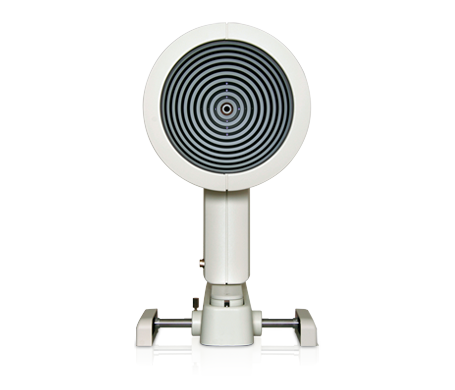3D Contacts For All Eyes

Scleral Lenses for Corneal Disease and Enhanced Vision
Scleral contact lenses are a game-changer for people who have challenges with wearing traditional contact lenses due to hard-to-fit eye conditions. They allow high levels of oxygen to reach the eyes and provide remarkable comfort by gently resting on the whites of your eyes without ever touching the cornea.
Dr. Faheem Inayatali - Keratoconus Specialist and Expert In Scleral Lens Technology
Dr. Inayatali Has Been Restoring Lost Hope and Utilizing Innovative Technology to Help Patients From All Over the World Regain Their Comfort and Vision.

World Leader in Scleral Lens Fitting and Visual Rehabilitation.
Dr. Faheem Inayatali dedicates his time to hard-to-fit cases to restore vision to those who have lost sight due to corneal conditions including keratoconus, abnormal myopia, dry eye, eye injuries, deformities, and severe burns. His specialties include care of patients with post-surgical complications, keratoconus, dry eye disease, and corneal injuries. Dr. Inayatali’s research during his education at Harvard University catered to designing specialized fits for severe dry eye patients.
Are Scleral Lenses Right for You? Candidates include those with:

Over the years, Dr. Faheem Inayatali has restored lost hope by Using innovative technology to help patients from all over the world regain their vision.
The Tech & Science for EXACT FIT Scleral Lenses
Scleral Profilometry Personalized Fitting
Using cutting-edge technology, we are now able to map the entire front surface of the eye using Scleral Profilometry. This allows for extreme precision when designing “3D printed” custom scleral lenses. This technology dramatically improves the success rate of the initial fit and reduces the number of visits our patients make to the office.
This technique is ideal for fitting eyes that may not have perfect symmetry of the sclera (white part of the eye) and allows us to produce a well-fitted scleral lens with greater comfort and stability. This reduces complications such as “Mid-Day Fog” or redness upon removal.
With this state of the art technology, we are changing lives through vision!
Dr. Faheem Inayatali has additional board certification and attains 50-60 additional hours of continuing education to enhance his skill set for specialty eye care.



Using Unprecedented Technology for Scleral Lenses
Finding the right eye care solutions for your unique needs starts with a comprehensive screening. Profilometry is a cutting-edge instrument that can profile the surface of your eyes with remarkable precision. Using non-invasive and 3D scanning, it maps the shape of your eyes, allowing for the detection of any irregularities.
5M Corneal Mapping Technology
Just like our individual fingerprints, our eyes have their own uniqueness, especially when it comes to the sclera. Our revolutionary technology truly matches the ‘fingerprint’ of your sclera.
It uses advanced technology, including a special video camera and mapping tools to capture millions of data points and craft a customized lens that perfectly conforms to the unique contours of your eye.
If you have astigmatism, keratoconus, or any other corneal irregularity, you can benefit from custom scleral lens technology.


EyePrintPro Technology
EyePrintPRO
The Dry Eye & Wellness Center also utiilizes EyePrint Technology. This utilizes impressions of the ocular surface to design specialized contact lenses that match the shape of each individual eye. This highly customized fit results in greater stability of the lens, improving comfort for many patients.
Rigid Gas Permable (RGP) Lenses
What Are RGP Contact Lenses?
RGP lenses are lenses that sit on the cornea and are crafted from sturdy silicone, which allows a constant flow of oxygen to reach the cornea. Unlike their outdated hard lens counterparts, RGP lenses also cover 75% of the cornea, floating effortlessly above the tear film. This means they offer comfort and stability and are less likely to slip during physical activities and sports. Although there’s an adjustment period for these lenses, once your eyes get used to them, you can hardly tell that they’re there!


Custom Prosthetic Lenses
Prosthetic lenses are a great solution for people with corneal irregularities. They improve the appearance of abnormalities caused by eye disease, trauma, or defects. They can also be customized to either include or exclude prescription, meaning they’re versatile for aesthetic purposes or correcting nearsightedness (myopia), farsightedness (hyperopia), and astigmatism.
CUSTOM PROSTHETIC LENS OPTIONS INCLUDE:
- Soft, gas-permeable lenses, or scleral lenses
- Prosthetic paint matching: Colors that closely match the appearance of a healthy eye
- Light-blocking design: Specific designs that prevent glare from reaching the retina
WHO CAN BENEFIT FROM PROSTHETIC LENSES?
- People with severe light sensitivity
- People with disfiguring conditions or incomplete formation of the pupil
- People who lack healthy eye pigmentation
- People with corneal trauma
